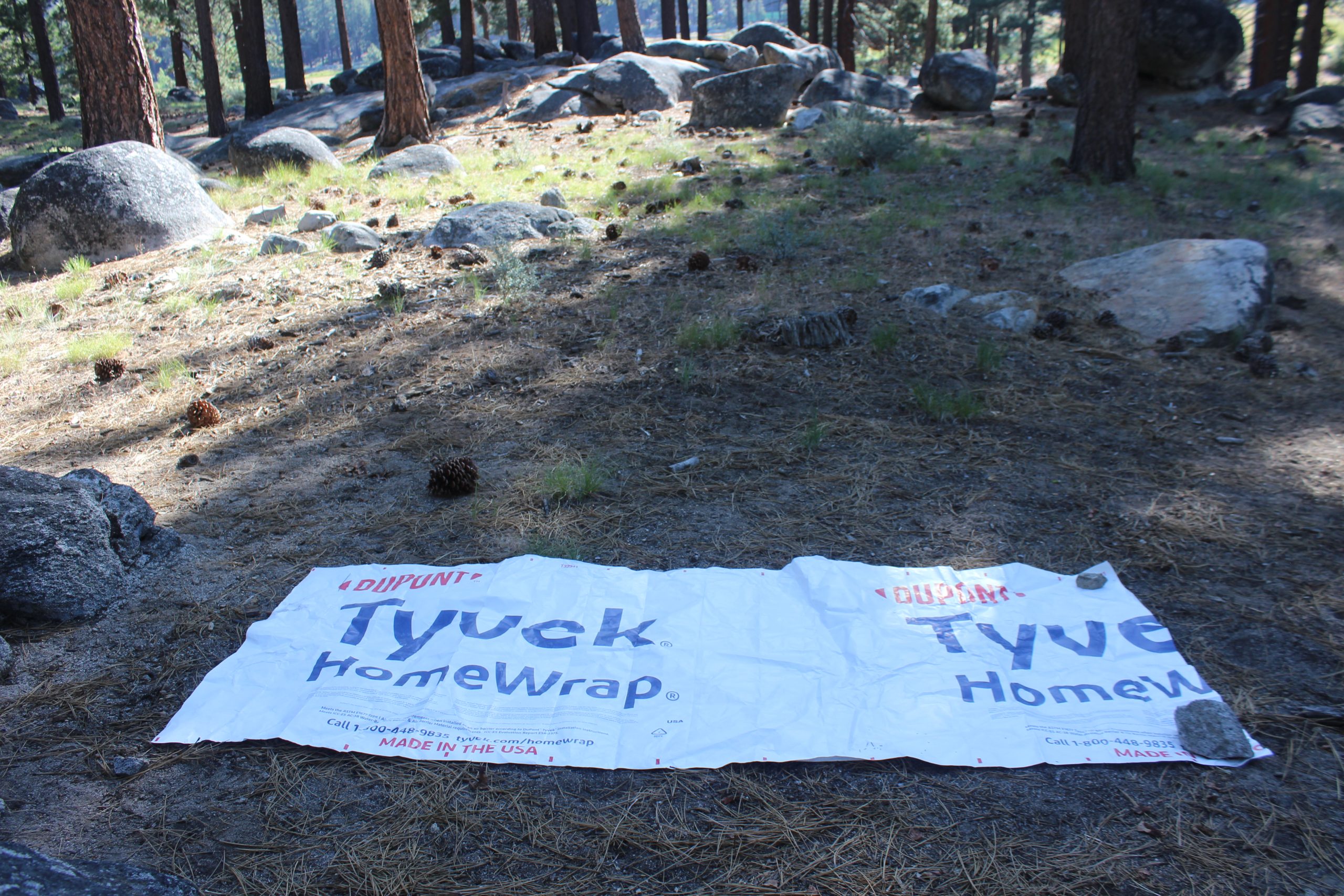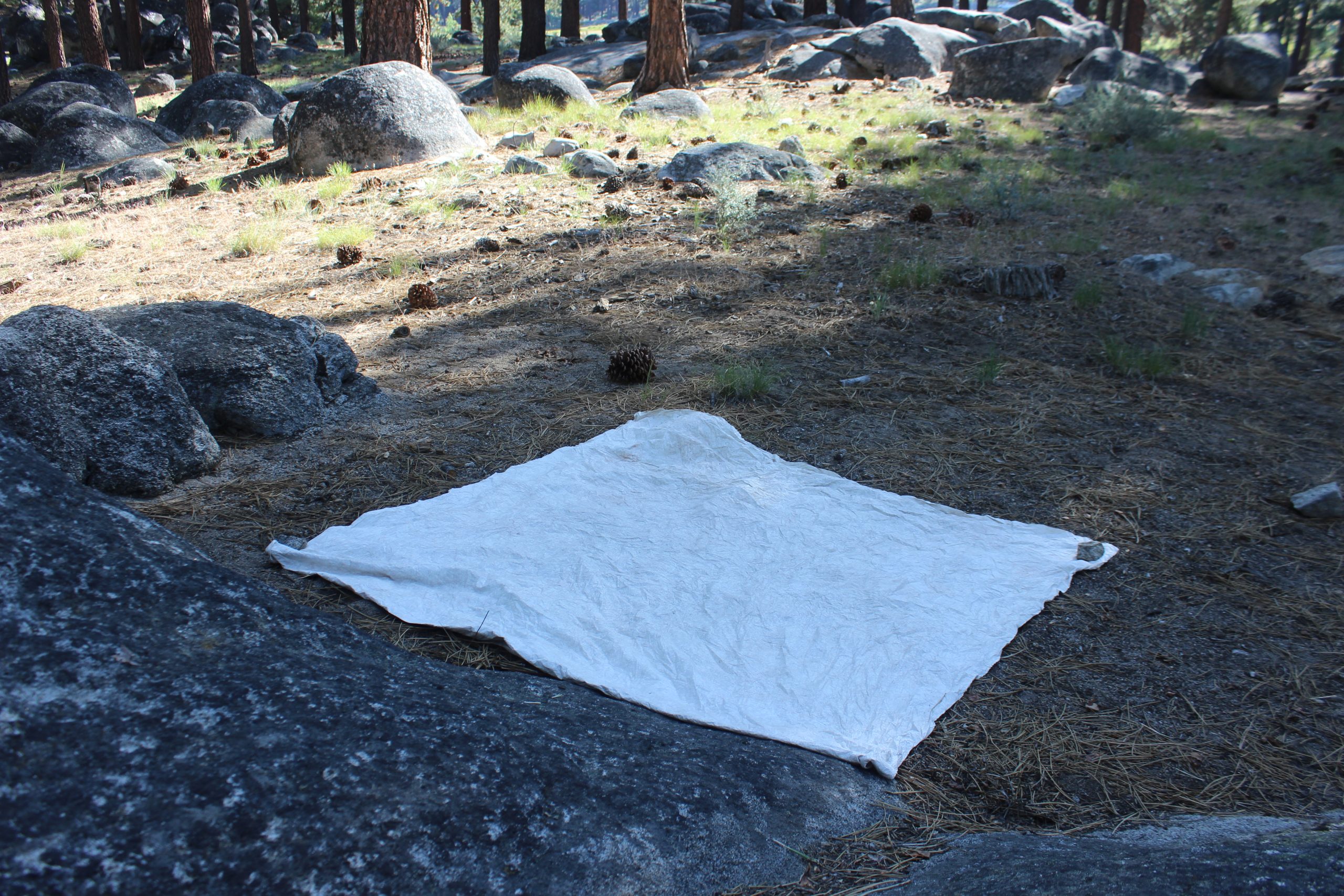YoIn the world of team innovation often comes in waves. There are progress periods in which it feels like a new piece of revolutionary gear that falls every day, followed by slower sections where progress is so incremental that the average hiker does not even realize (even if that stake of the store is Technically 0.001 lighter ounces).
I am not an addict to the staunch team, but I have enough miles to my credit to appreciate an outstanding team. In this case: my earth sheet.
What would happen if I said that simple and economical update to your earth sheet material, an update so subtle that I ran into the accident for the first time, could significantly improve your hiking experience every night? All you need to do is choose Tyvek’s correct type (and no, it is not the type you are thinking).
What is Tyvek?
Tyvek It is a name registered in 1965 by the controversial Dupont chemical company after they created a material made of high density polyethylene fibers (HDPF) united with heat and pressure. The process creates a material that is hard and durable, combining plastic, film and paper properties.
Tyvek does not easily absorb water, it is essentially impermeable to liquids while allowing water vapor to pass. Its durability / weight ratio is generally what makes it a winner in the backpack world.
Not all of Tyvek is created the same
All this began when I received my Tyvek ordered by Amazon many years ago and thought: «HMM, this is not as strong and unpleasant as everyone says that his Tyvek earth sheet is. I wonder why they do a big problem about the sound and texture of the material.»
It turns out that I had accidentally bought a superior type of Tyvek: Tyvek in comets instead of Homewrap Tyvek..
The best UL Earth sheet materials: Comet’s manufacturing Tyvek vs. Tyvek Homewrap
Homewrap Tyvek (left), comets Tyvek (right)
Homewrap Tyvek
Dimensions: 3 feet x 7 feet
Field weight: 4.2 oz
Price: ~ $ 20.57
This is Tyvek’s land sheet version that most hikers end up buying and cuts from the same material that is in construction sites. It is cheap, fast sending (especially with Amazon Prime) and light enough to win a place in an ultralight package. It is also very waterproof and extremely durable.
But it is noisy. So strong. The plastic plastic sound is annoying not only for you, but for any person camping nearby. Sorry Trail Family. Nor is it blank and immediately remembers a construction site thanks to the giant logo of Dupont Tyvek Homewrap on the front.
If you are in a time of time or with a more tight budget, it works. But if you care about comfort and tranquility, Homewrap may not be the best long -term solution and you may want to update the comet manufacturing TYVEK.
In a nutshell: Well in a hurry, but wrinkled noise ages quickly when the camp is being configured and packed every day on a walk.

Comet manufacturing Tyvek (1443r)
Dimensions: 6.6 feet x 6.6 feet (must cut to size)
Field weight: 4.1 oz
Price: ~ $ 25
If you value quiet nights along the way, this is a change of game. Unlike the Homewrap Tyvek standard that most hikers opt, this version (technically used to make comets) is smooth, flexible and, most importantly, not wrinkled! You can throw and turn without awakening your entire camp and pack in the morning with the same ease.
Comet manufacturing Tyvek is less wrinkled. Here is the test:
Tyvek of 6 seconds to bite me with whisper:
6 seconds of sound sound of me Rushling Homewrap Tyvek:
It is also extremely durable and waterproof, as is the homewrap version, although certainly to a lesser extent. It is not so firm and filter, with a single side with an exterior similar to a film to repel the water.
In Amazon, it comes on a large sheet of 6.6 x 6.6 feet that can cut its ideal dimensions of your store. Personalized size is an important advantage, especially for hikers with shelters strangely. It is also simple white, so you can use it to write a hiker to the city, make your family of paths firm your names or basically write any other useful (or useless) message you would like.
That said, it is not perfect. The same softness that does so in silence also causes dirt, leaves and ground remains more easily. A quick smoothie usually does the trick, but it will not be worn impeccable after the first use in a wooded forest. In addition, the current Amazon shipment is a bit slow, wait 1 to 2 weeks, but in my opinion, it is worth waiting.
A note about durability
Comet manufacturing Tyvek is not as durable or waterproof as Homewrap Tyvek, but most campsites do not require that level of pump proof anyway. I have been using the same Tyvek earth sheet to make comets during the last six years on multiple paths, including the Pacific Crest Trail and the Colorado Trail, and still protects my part of the store bravely.
In total, it has been used for more than 400 nights on the path and is still being strengthened. The only holes you have received are small fires of fires of fire. Otherwise, it is functionally resistant to tear.
A note about waterproofing
Its hiking climate should also be a consideration when choosing a leaf. In the west, where it is often dry, water resistant material is not as important as the east could be, where the weather tends to be much more humid. That said, my Tyvek earth sheet that Kite has provided sufficient water resistance for all my backpack needs in the last six years.
In the snow, my Tyvek who makes comets works well as an effective moisture barrier. In the rain, its properties more similar to the fabric make it less water resistant than homewrap tyvek, but it still does not completely get wet. I don’t care to dry my earth sheet later with the rest of my team and I still prefer to worry with Homewrap Tyvek.
In a nutshell: The best for hikers who want a solution to the noisy and noisy ground sheet and do not care about path bits attached to their sheet.

Why a Tyvek earth sheet that makes comets exceeds Homewrap every time
Choosing the correct ground sheet can make a big difference for sanity on the road. For me, the quieter and softer Tyvek of the kite (1443r) wins every time.
It can be a few dollars more than Homewrap Tyvek and it can take a few more days to arrive, but after hundreds of nights along the way, not to enclose the sound of wrinkled plastic and at the same time obtain the same light protection result is worth its weight in gold for me.
If you are only looking for something cheap and fast to launch under your store for a weekend trip, the tribute can Do the job, but in my opinion, the kite manufacturing Tyvek is usually the best option.
What type of ground sheet do you use?
Do you have a different ground leaf option for which you swear? Do you have a horror story to share? Leave a comment below!
If this helped him, consider sharing it with a friend of trails who are planning his next trip. The goal here is a completely protected store and a wrinkled less in the camp. Happy paths!
Outstanding Image: Photo courtesy of Kelsey Nannini; Graphic design by Chris rudder.


:max_bytes(150000):strip_icc():focal(999x0:1001x2)/noah-kahan-small-business-saturday-120124-860fc527e6dd4c1c87320aaf5697bae8.jpg?w=238&resize=238,178&ssl=1)

:max_bytes(150000):strip_icc():focal(1025x450:1027x452)/Spencer-Lofranco-112025-56efb2cd379b4817ac0f4d3b10fb37f3.jpg?w=238&resize=238,178&ssl=1)